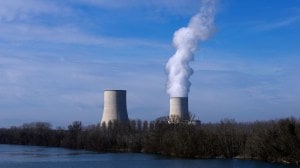NCAER sees 5.5% GDP growth
NEW DELHI, July 10: The National Council for Applied Economic Research (NCAER) has predicted a GDP growth rate of 5.5 per cent and inflation...

NEW DELHI, July 10: The National Council for Applied Economic Research (NCAER) has predicted a GDP growth rate of 5.5 per cent and inflation rate of 8.2 per cent for the current financial year. The post-budget forecast based on the NCAER’s macroeconomic model for India, suggests a nominal GDP growth of around 14 per cent and M3 growth of about 16 per cent. The industrial growth is expected to be close to 5.5 per cent.
According to the forecast, the exports are likely to grow at the rate of 4 per cent in dollar terms and imports at 5.5 per cent. The trade deficit as percentage of GDP has been projected at 1.43, while the fiscal deficit is expected to be 5.7 per cent of the GDP. The total investment, as percentage of GDP will be 23.3 per cent. While making the forecast, the NCAER has assumed that agricultural prices will increase by 6.8 per cent on an average compared to the pre-budget rate of 6.2 per cent. This reflect the recent trend and the higher minimum support prices announced by the government.
TheNCAER has also assumed that foreign inflows would decrease by $ 1 billion in wake of economic sanctions and the average value of rupee would depreciate by 15 per cent. The nominal interest rate, according to the NCAER, was expected to increase by one percentage point over the levels in 1997-98.
A comparison of the post-budget forecast with that of the comprehensive package (CP) forecast made priori to the budget reveals a decline of almost a full percent in the projected GDP growth for 1998-99. The major reasons being the size of fiscal stimulus between the two scenarios. The CP projections contained an increase in public investment almost twice as large as that in the budget. Private investment too is lower in the post-budget forecast due to a greater decline in external capital inflows, although the interest rates are lower in the post-budget than in the CP scenario.
On the external front, export growth at 4 per cent in the post-budget forecast is slightly more than in the CP scenario as a result of themarginally greater depreciation of the rupee. Import growth, on the other hand, is marginally lower in the CP scenario reflecting the assumption of an across-the-board tariff hike of 5 per cent. The post-budget forecast, in contrast, rests on an assumption of virtually no increase in the effective rate of tariffs. The fiscal and trade deficits as percentage of GDP are both lower in the post-budget forecast than in the CP scenario. The fiscal deficit is lower both because the nominal increase in public investment is much less in the post-budget forecast.
Photos


- 01
- 02
- 03
- 04
- 05





























